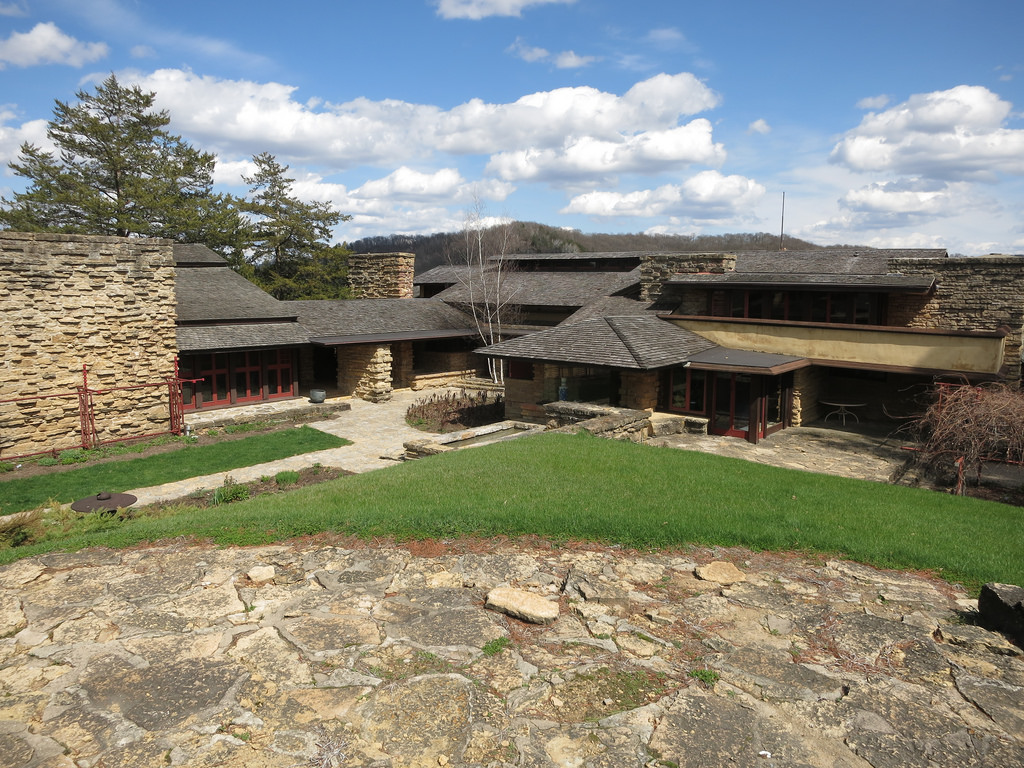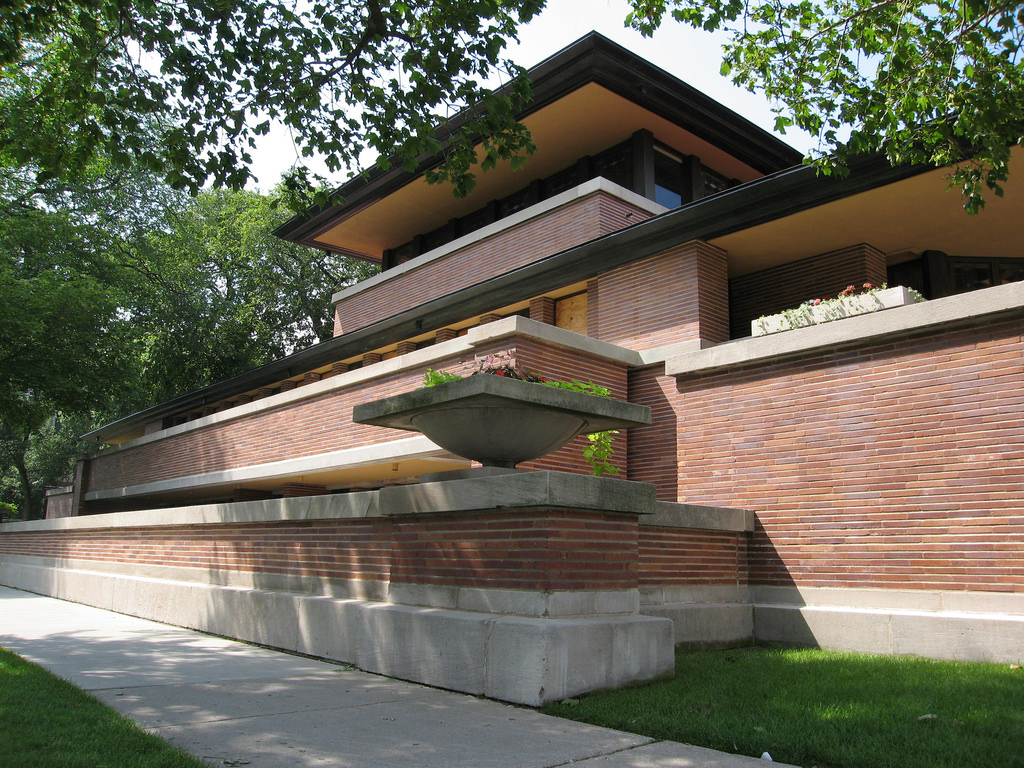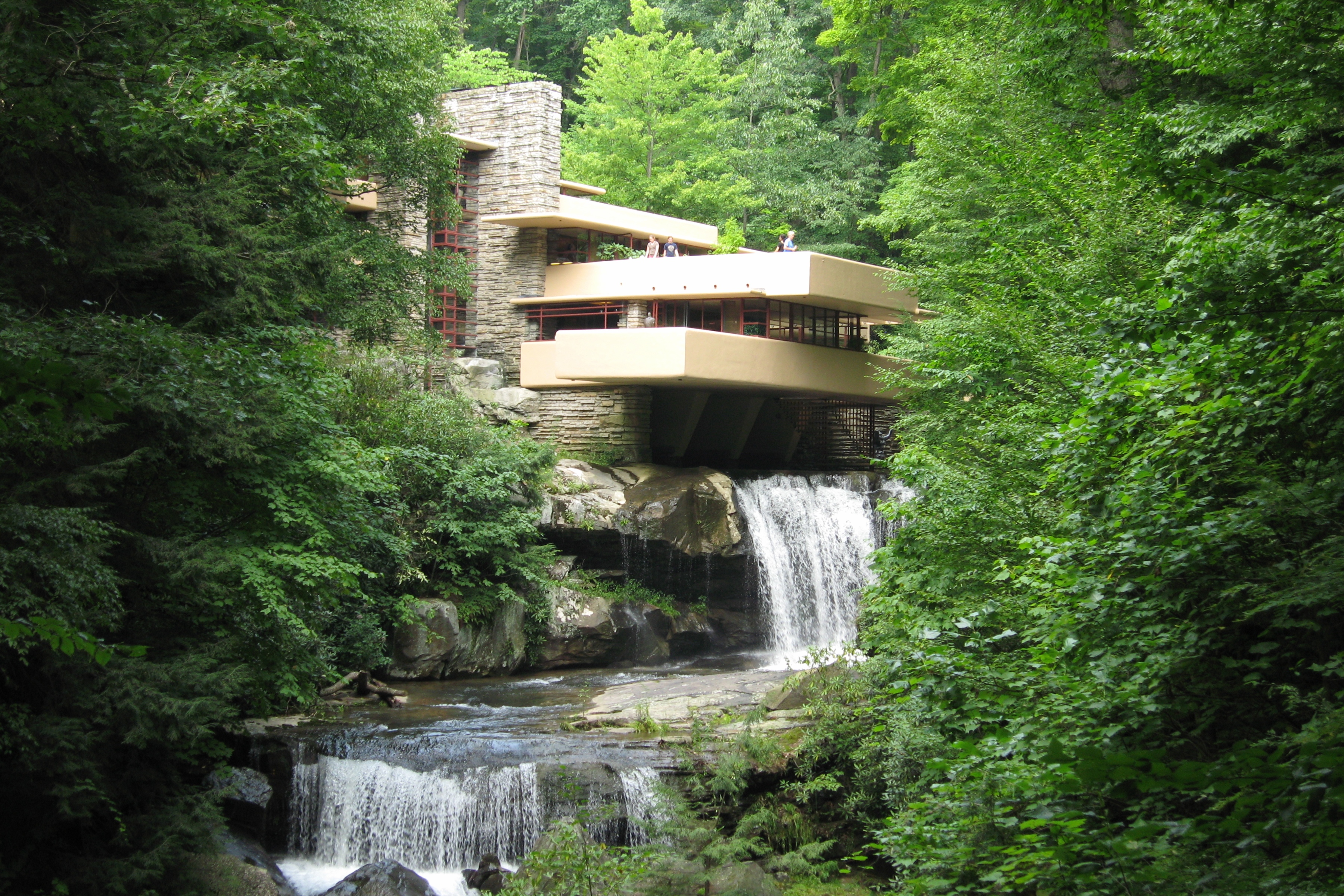John Idris Jones remembers his encounters with the work and legacy of America’s giant of twentieth century design and architecture, and looks at the new BBC Four documentary presented by Jonathan Adams.
Well, he wasn’t exactly the man who built America. But he was one of them; and we can excuse the hyperbole in titles.
It takes me back to the US in the early 60s when I spent two years there, studying and teaching at Northern Illinois University, DeKalb; about 100 miles west of Chicago. It was the mid-West; flat and open yet intriguing. A straight high street with wooden shop facades; a railway crossing it, and you had to be careful your car was not sliced in two by the huge locomotive that rushed through in a cloud of noisy black. In the better part of town was a house designed by the revered Frank Lloyd Wright. A prairie house not quite on the prairie. The maid ‘of colour’ opened the wide wooden front door for me. The lady of the house appeared in a large room of elegant proportions. She pointed to the furniture, also by Wright, that they had managed to buy. Plain wood prevailed. She pointed at metal pipe ends in the tall skirting boards which were for a vacuum cleaner system which sucked dust down to a container in the basement. The tops of the generous windows and the tops of the door-frames all lined-up to make a frame above your head. She said there was a space on the roof, flat, for sun-bathing, but you did have to watch out for passing aircraft.

I set off, exploring. I discovered Taliesin East but could not get near it – it only showed itself reluctantly. At the Unitarian Church, the entrance was low and it felt as if you had to dip your head on entering, in reverence. The Robie House in Chicago had a muscular presence, as if the Aztecs had come to stay and build.


Frank Lloyd Wright: The Man Who Built America is available for a limited time on the BBC iPlayer.
The BBC on Frank Lloyd Wright:
Frank Lloyd Wright is America’s greatest ever architect. But few people know about the Welsh roots that shaped his life and world-famous buildings. Now, leading Welsh architect Jonathan Adams sets off across America to explore Frank Lloyd Wright’s masterpieces for himself. Along the way, he uncovers the tempestuous life story of the man behind them, and the secrets of his radical Welsh background.
In a career spanning seven decades, Frank Lloyd Wright built over 500 buildings, and changed the face of modern architecture. Fallingwater, the house over the waterfall, has been called the greatest house of the 20th century. The spiralling Guggenheim Museum in New York reinvented the art museum. Wright’s Welsh mother was born and raised near Llandysul in west Wales, and emigrated to America with her family in 1844. Her son Frank was raised in a Unitarian community in Wisconsin. The values he absorbed there were based on a love of nature, the importance of hard work, and the need to question convention and defy it where necessary. Wright’s architecture was shaped by these beliefs. He built his lifelong home in the valley he was raised in, and he named it after an ancient Welsh bard – Taliesin. It was the scene of many adventures, and of a horrific crime. In 1914, a servant at Taliesin ran amok and killed seven people. They included Wright’s partner, Mamah Cheney, and her two young children.
150 years after his birth, Adams argues that Frank Lloyd Wright is now a vitally important figure who can teach us how to build for a better world. Wright’s belief in what he called organic architecture – buildings that grace the landscape and respond to people’s individual needs – is more relevant than ever, in Wales and around the world.











